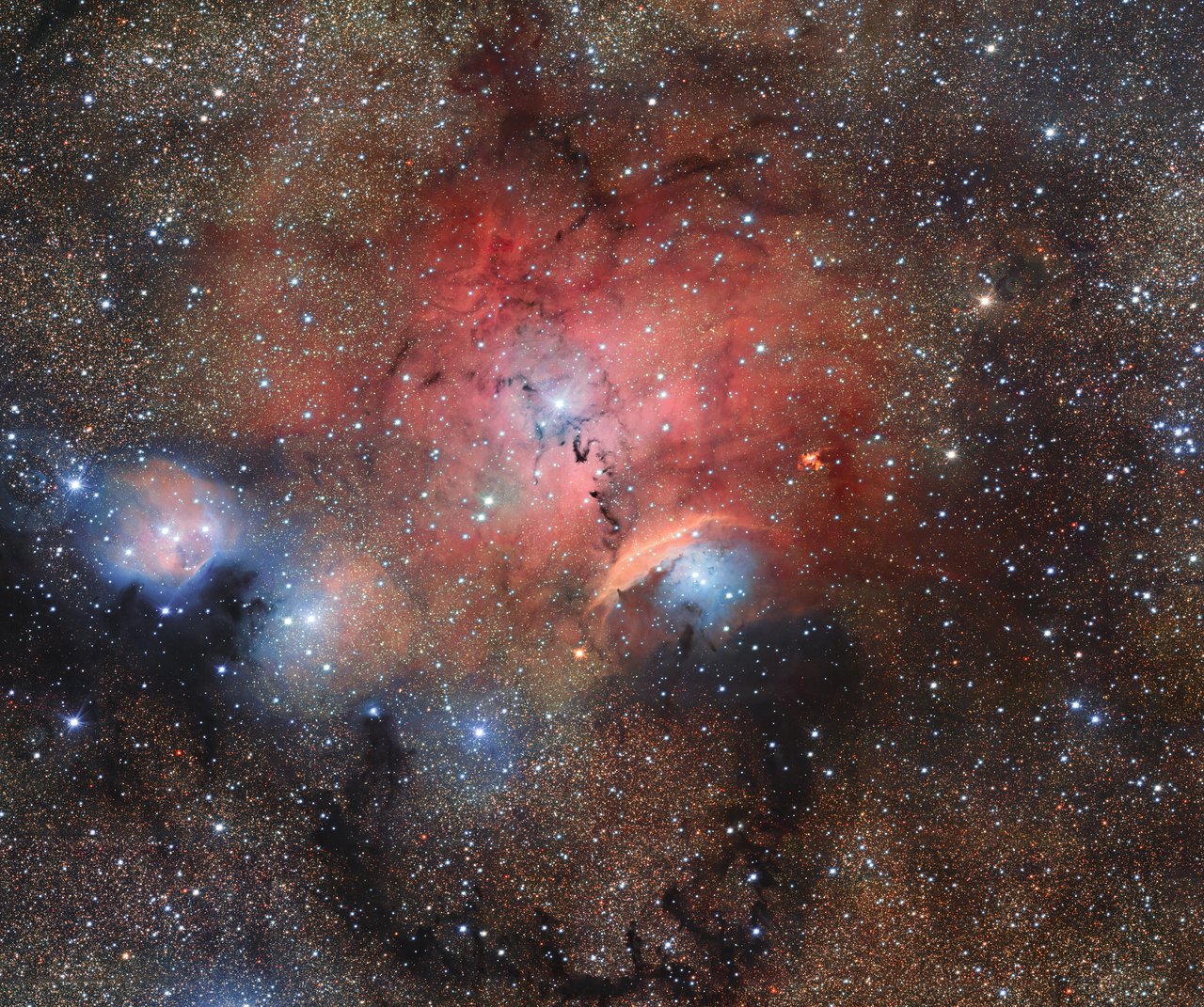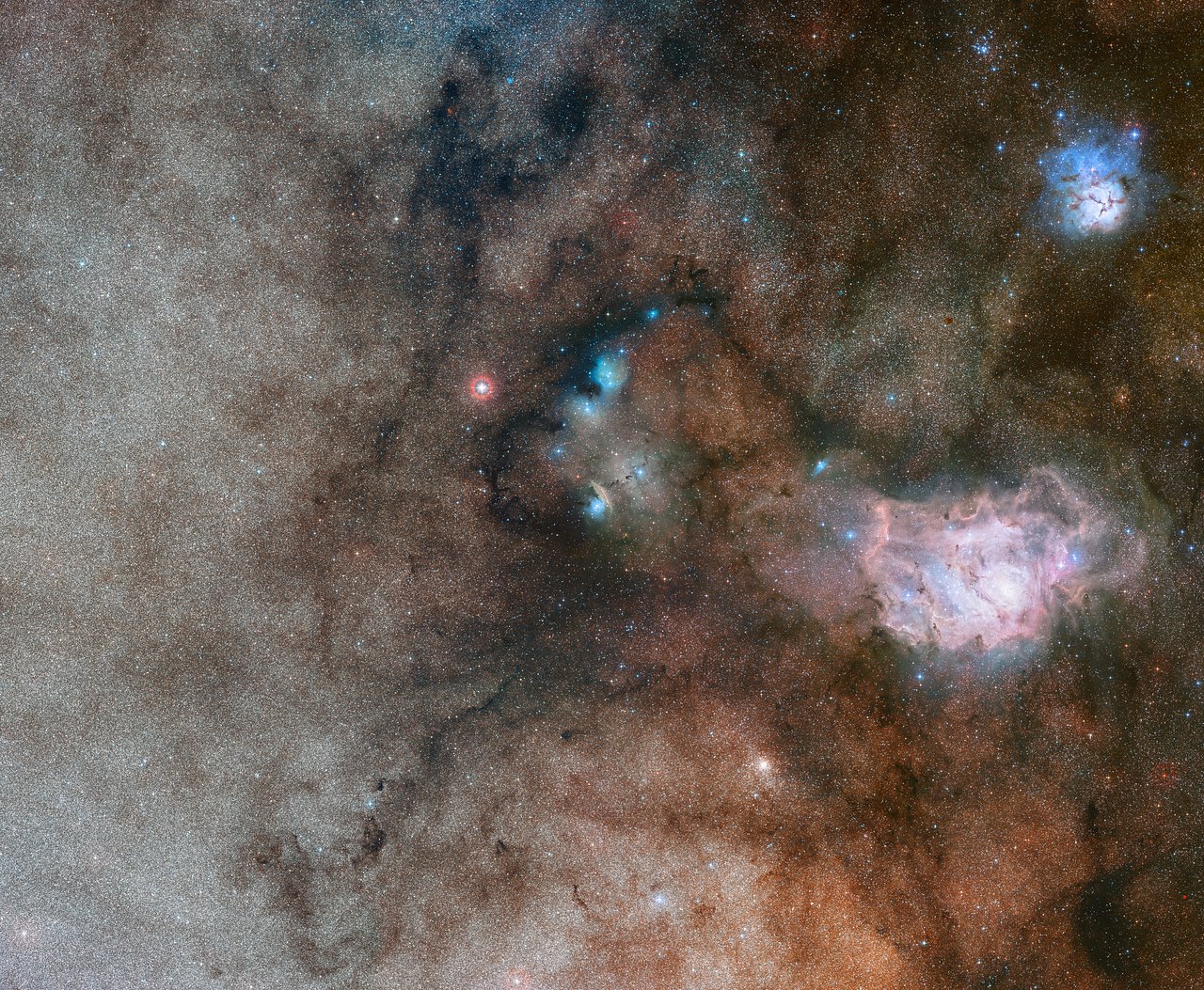Colorful Cosmic Clouds Glow in Dazzling Image of Stellar Nursery
Star creation is messy and magnificent, and a new image from a powerful telescope camera reveals a cosmic hotbed of interstellar formations dazzling in vivid colors within the constellation Sagittarius.
Sharpless 29 is a stellar nursery churning about 5,500 light-years away. At its center sits a peach-and-azure nebula known as NGC 6559, the brightest feature in this spectacular region of the night sky, European Southern Observatory (ESO) officials said in a statement.

The OmegaCAM camera, an innovation in telescope technology that began scanning the sky in 2011, captured imagery of Sharpless 29 from atop ESO's VLT Survey Telescope in Cerro Paranal, Chile.,ESO released the images on Dec. 13.
OmegaCAM can observe wavelengths of light ranging from ultraviolet to infrared, and its ability to capture the spectral line H-alpha is particularly valuable, ESO officials said in the statement. That's because that wavelength is generated when hydrogen atoms lose energy, which is a common occurrence within nebula clouds like those of Sharpless 29. With this new observation technique, scientists can determine the movement of gas in stars and nebulas. "This sensitivity allows OmegaCAM to be able to efficiently study young stars accreting mass to form a circumstellar protoplanetary disc, or to characterise the physics of gigantic molecular clouds where new stars and planets form," said Giacomo Beccari, OmegaCAM Instrument Scientist.
At only a few light-years across, NGC 6559 is small in astronomical terms., The cloud of dust and gas is not as serene as it may appear, however: Stellar nurseries are places with intense activity.
The young stars in this image are no more than 2 million years old, and they erode and sculpt out material with the flows of material they create, called stellar winds, as well as blast out high-energy radiation. The peach-colored arch of the nebula is actually being produced by this activity, as the cavity of the nebula expands and material gathers along the outside. The nebula's color comes from the young stars' ultraviolet radiation bombarding the surrounding dust and gas, ESO officials said in a the image description.

The reds in this image are produced from emissions of hydrogen gas, and the blues are caused by the scattering of small dust particles and their reflection of the young stars' released energy, ESO officials said.
Get the Space.com Newsletter
Breaking space news, the latest updates on rocket launches, skywatching events and more!
Follow Doris Elin Salazar on Twitter @salazar_elin. Follow us @Spacedotcom, Facebook and Google+. Original article on Space.com.
Join our Space Forums to keep talking space on the latest missions, night sky and more! And if you have a news tip, correction or comment, let us know at: community@space.com.

Doris is a science journalist and Space.com contributor. She received a B.A. in Sociology and Communications at Fordham University in New York City. Her first work was published in collaboration with London Mining Network, where her love of science writing was born. Her passion for astronomy started as a kid when she helped her sister build a model solar system in the Bronx. She got her first shot at astronomy writing as a Space.com editorial intern and continues to write about all things cosmic for the website. Doris has also written about microscopic plant life for Scientific American’s website and about whale calls for their print magazine. She has also written about ancient humans for Inverse, with stories ranging from how to recreate Pompeii’s cuisine to how to map the Polynesian expansion through genomics. She currently shares her home with two rabbits. Follow her on twitter at @salazar_elin.









